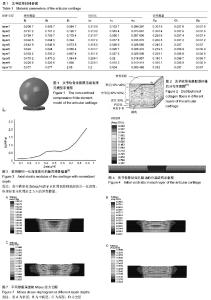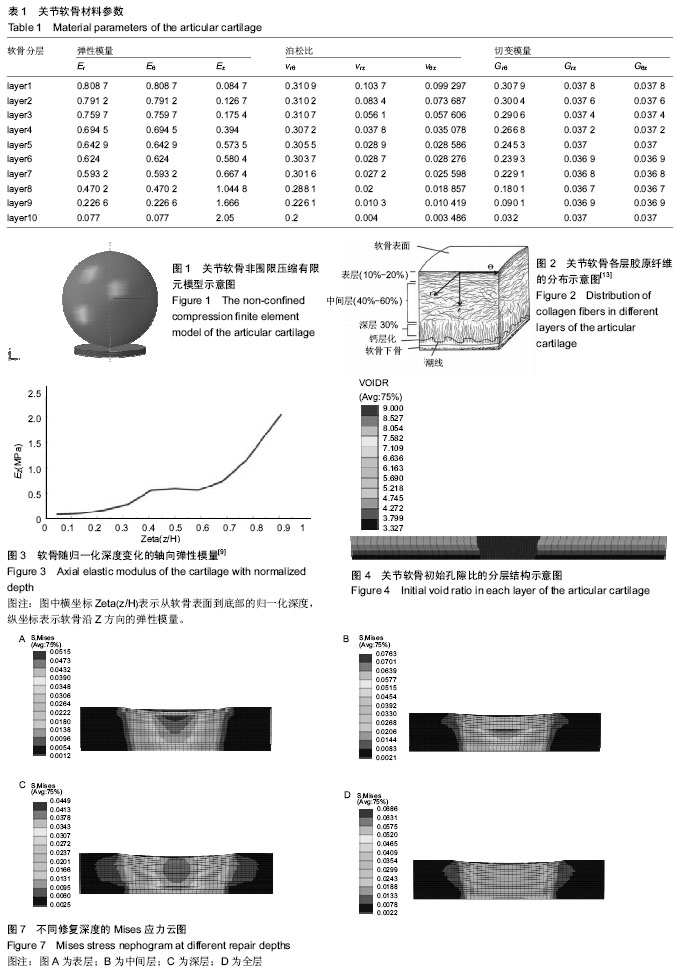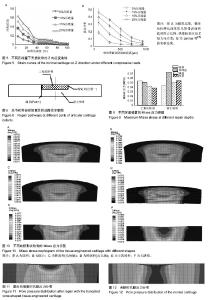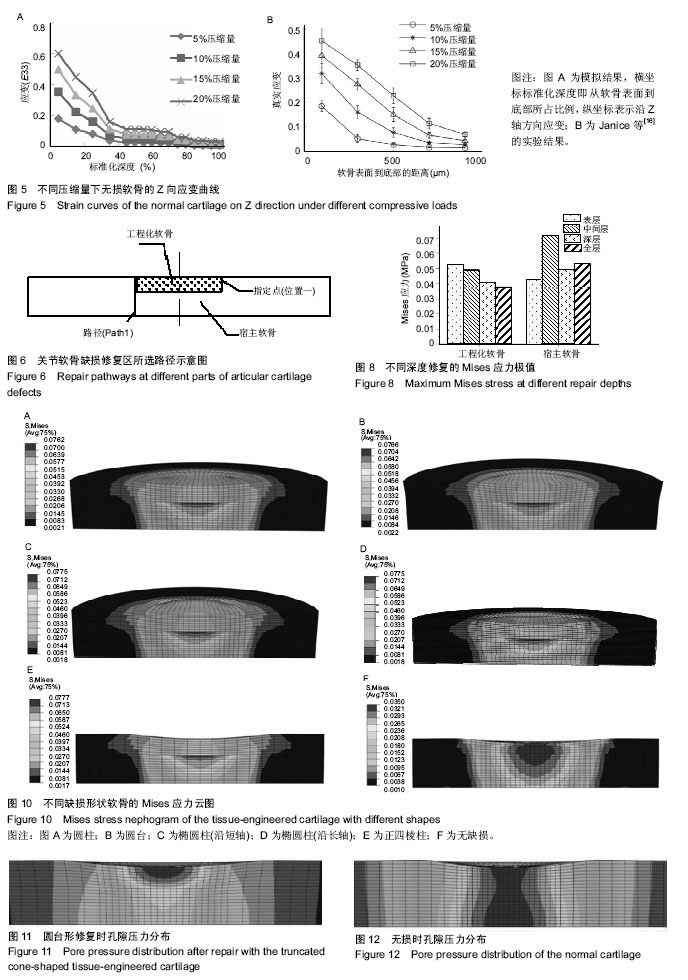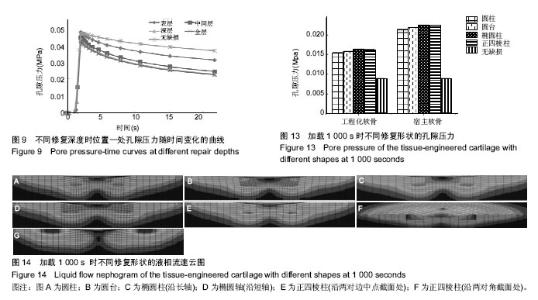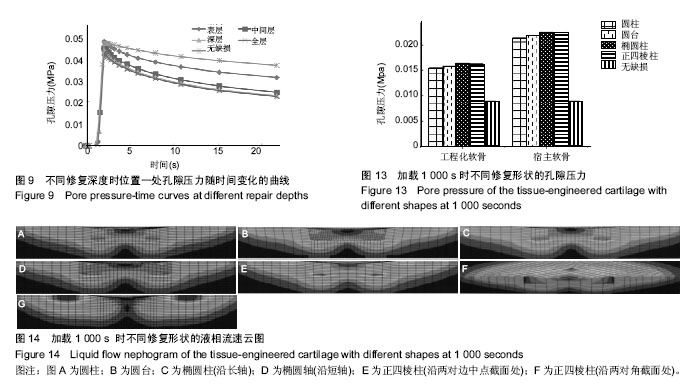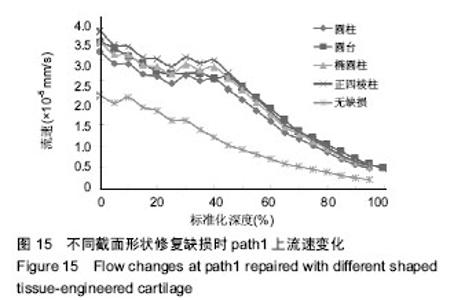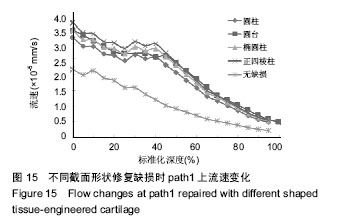| [1] Brody LT. Knee osteoarthritis: Clinical connections to articular cartilage structure and function. Phy Ther in Sport.2015;16(4): 301-316.[2] Ahmed TA,Hincke MT.Strategies for articular cartilage lesion repair and functional restoration.Tissue Eng Part B Rev.2010; 16(3):305-329.[3] Vahdati A,Wagner DR.Finite element study of a tissue-engineered cartilage transplant in humantibiofemoraljoint.Comput Methods Biomech Biomed Engin.2012;15(11):1211-1221.[4] Hayes WC,Keer LM,Herrmann G,et al.A mathematical analysis for indentation tests of articular cartilage. J Biomech.1972; 5(5): 541-551.[5] Mow VC, Kuei SC, Lai WM,et al.Biphasic Creep and Stress Relaxation of Articular Cartilage in Compression: Theory and Experiments.J Biomech Eng.1980;102(1):73-84.[6] Suh JK, Bai S. Finite element formulation of biphasic poroviscoelastic model for articular cartilage. J Biomech Eng. 1998;120(2):195-201.[7] Li LP,Soulhat J,Buschmann MD,et al.Nonlinear analysis of cartilage in unconfined ramp compression using a fibril reinforced poroelastic model. Clin Biomech(Bristol, Avon).1999;14(9): 673-682.[8] Garcia JJ,Altiero NJ,Haut RC.An approach for the stress analysis of transversely isotropic biphasic cartilage under impact load.J Biomech Eng.1998;120(5):608-613.[9] Elhamian SM,Alizadeh M,Shokrieh MM,etal.A depth dependent transversely isotropic micromechanic model of articular cartilage.J Mater Sci Mater Med.2015;26(2):1-10.[10] 孟迪,张春秋,刘海英,等.软骨缺损形状对组织工程修复区的力学影响[J].生物医学工程与临床, 2016,20(1):9-14.[11] 周玉.修复的缺损软骨在滑动条件下力学性质的研究[D].天津理工大学, 2014.[12] Warner MD, Taylor WR, Clift SE.Cyclic loading moves the peak stress to the cartilage surface in a biphasic model with isotropic solid phase properties. Med Eng Physics.2004;26(3):247-249.[13] Jazrawi LM,Alaia MJ,Chang G,et al.Advances in magnetic resonance imaging of articular cartilage.J Am Acad Orthop Surg.2011;19(7):420-429.[14] Li LP, Buschmann MD, Shirazi-Adl A.A fibril reinforced nonhomogeneous poroelastic model for articular cartilage: inhomogeneous response in unconfined compression.J Biomech.2000;33(12):1533-1541.[15] 吴军成,霍然,吕仁荣.软骨组织工程中支架材料的文献回顾[J].中国组织工程研究,2012,16(3):522-526.[16] Lai JH, Levenston ME. Meniscus and cartilage exhibit distinct intra-tissue strain distributions under unconfined compression.Osteoarthritis Cartilage.2010;18(10): 1291-1299.[17] Owen JR, Wayne JS. Influence of a superficial tangential zone over repairing cartilage defects: implications for tissue engineering. Biomech Model Mechanobiol. 2006;5(2-3):102-110.[18] 段航天.压缩载荷作用下关节软骨修复区细胞的力学环境研究[D].天津理工大学,2017.[19] Mandel J. Consolidation des sols(etude mathematique). Geotechnique.1953;3:287-299[20] Cryer CW. A comparision of the there-dimensional consolidation theories of biot and terzaghi. Quarterly Journal of Mechanics & Applied Mathematics.1963;16(4):401-412.[21] Vahdati A, Wagner DR. Finite element study of a tissue-engineered cartilage transplant in human tibiofemoral joint. Comput Methods Biomech Biomed Engin.2012;15(11):1211-1221.[22] Zhou Y, Liu HY, Men YT, et al. Numerical Study on Mechanical Behavior of Tissue-Engineering Repaired Cartilage in Sliding Load Condition. Applied Mechanics Materials.2013;441:598-601.[23] Flanigan DC, Harris JD, Brockmeier P M, et al. The effects of defect size, orientation, and location on subchondral bone contact in oval-shaped experimental articular cartilage defects in a bovine knee model.Knee Surg Sports Traumatol Arthrosc.2014; 22(1): 174-80.[24] Flanigan DC,Harris JD,Jia G,et al. Effect of chondral defect size, shape, and location on MRI diagnostic performance in the porcine knee. Orthopedics.2014;37(4):322-327.[25] 余家阔.膝关节软骨全层缺损的常用修复方法[J].中华关节外科杂志:电子版, 2010, 4(6):1-8 |
